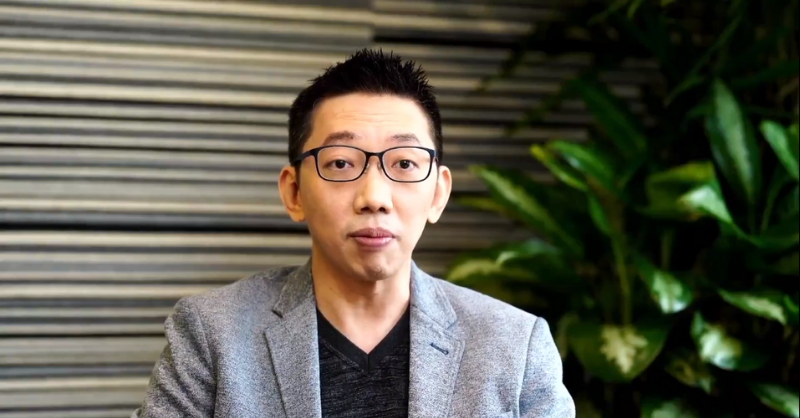In the digital age, the customer experience industry is constantly evolving. At some point, companies should not just follow current trends, but understand which certain investments can positively impact the future of the industry.
Everise Chief Financial Officer, William Foo, sat down with us for an interview to share his thoughts and observations on the future of the CX industry. He also discusses how companies responded to the COVID pandemic and how Everise managed to achieve business continuity through our early investments in people and technology to evolve amidst an ever-changing business landscape.
Q: Do you foresee further consolidation or fragmentation in the BPO market this year?
A: If you look at the trend over the last five to six years in the BPO industry, you see a growing trend of companies being consolidated. And the reason is quite simple. Clients increasingly are looking at a one-stop-shop solution. And if you are a company offering one or two solutions and not giving them a full range of solutions to your clients, I think that makes it very difficult to grow, and that makes you ripe as a target for an acquisition.
So we have seen a lot of consolidation over the last five, six years, and I think we'll continue to see that in 2021, especially coming out of COVID, companies are slowly recovering back to their pre-COVID levels. And we've already seen companies that are increasingly being very active, including ourselves. So we’ll continue to see lots of consolidation within the sector. We'll continue to see companies getting larger and larger. And I think that will be the trend for this year.
Q: What impact will the acquisition of Everise in late 2020 bring in 2021?
A: First of all, we are very excited to be part of Brookfield. The Brookfield enterprise is very large. To be part of that big family and being associated with Brookfield, that's a real privilege and a real honor. We are very excited about this acquisition. The good thing about Brookfield and Everise is that we are very, very aligned.
They see us as a platform to grow the entire customer experience platform. And we are similarly excited because that's exactly where we want to be. We are here to be at the forefront and the leading edge of the entire CX change. So we are very aligned, and I think Brookfield, given their size, is very willing and able to help us grow and reach our objective. So, I think there is a natural alignment and I see great things happening this year.
Q: How has COVID-19 affected the business of CX?
A: As a general industry, 2020 was a very challenging year because most of the companies in this space were just not prepared for COVID. And when I say not prepared for COVID, I don't mean just COVID. I think they were not prepared to have people that cannot work on site. So as a general rule of thumb, I think the industry was facing one of its biggest challenges, at least for the last 10 years. But there were success stories.
Everise, for example, grew 30 percent organically in 2020 and there are few other companies that did very well. And a key differentiator between these companies and the general industry is that the companies that were able to react quickly, the companies that have made investments in technology to prepare for work at home environments, companies like these - and we were obviously a part of them - were able to then step out from the rest of the companies in this industry, and really positioned themselves as the next generation. And I think companies that have done that well have thrived even in 2020.
Q: What macro responses did Everise have to make during the pandemic that your management was unprepared for?
A: Sudhir always had a vision, even two, three years back before COVID. It started from wanting to build a platform for work at home. So in 2018, we invested in our own technologies for work at home. We did a pilot with a client and we grabbed the pilot. So even before COVID-19 hit, we were already at about 700 people working from home. So when COVID hit, I think the good thing is because we already had invested in a platform, we already had people who have been working with work-at-home agents for a year or more, that got us ready for the challenges of transferring people to work at home.
That's how we were able to transition more than 90 percent of our workforce globally, about 10,000 people from sites to work at home. We have had to deal with the logistics, we had to deal with technology challenges, but we overcame all of that in a period of three weeks, which I think is highly commendable.
Q: Has it gotten easier or harder to manage the business with the majority of your workforce working from home?
A: I wouldn't say it's a matter of being easier or harder. There is certainly a change that we all have to adapt to. When you're working in the office, your behaviors are different from when you’re working at home. For me, and certainly for Everise as well, it’s all about preparing for those changes and adapting to them. We have to be conscious that, yes, our people are working from home. Yes, there will be distractions. Yes, there'll be security that we have to think about. We all have to work towards that and ensure that we build it as part of our program for our people. So I think we've done a relatively good job, but there is still a long way to go.
We've been able to ensure that the security of our clients has not been compromised. We've been able to ensure that our people continue to stay connected to us, even though they are working at home. And I think those have really helped us in just being able to recognize that there is a subtle change in the way that they work while they are working at home, and has allowed us to be prepared for those, has allowed us to be reactive to those people, and has allowed us to build a platform where they are happy and still contribute to Everise.
Discover how brands evolve customer experiences by leveraging the benefits of our home-based CX model. Download our Case Study.
Related Insights:


